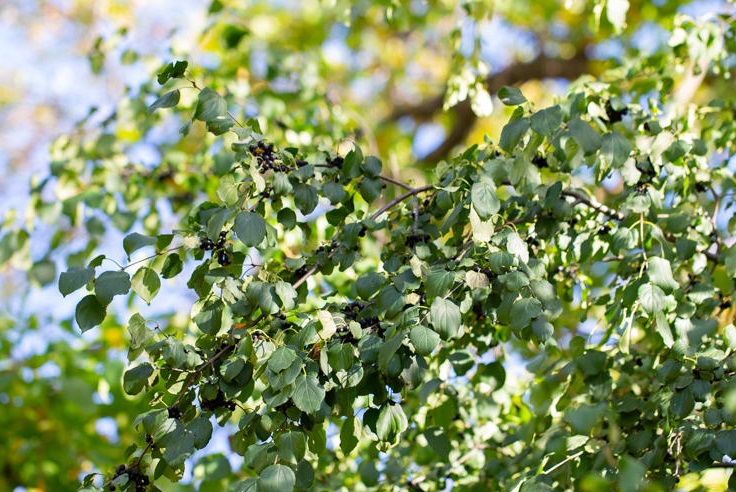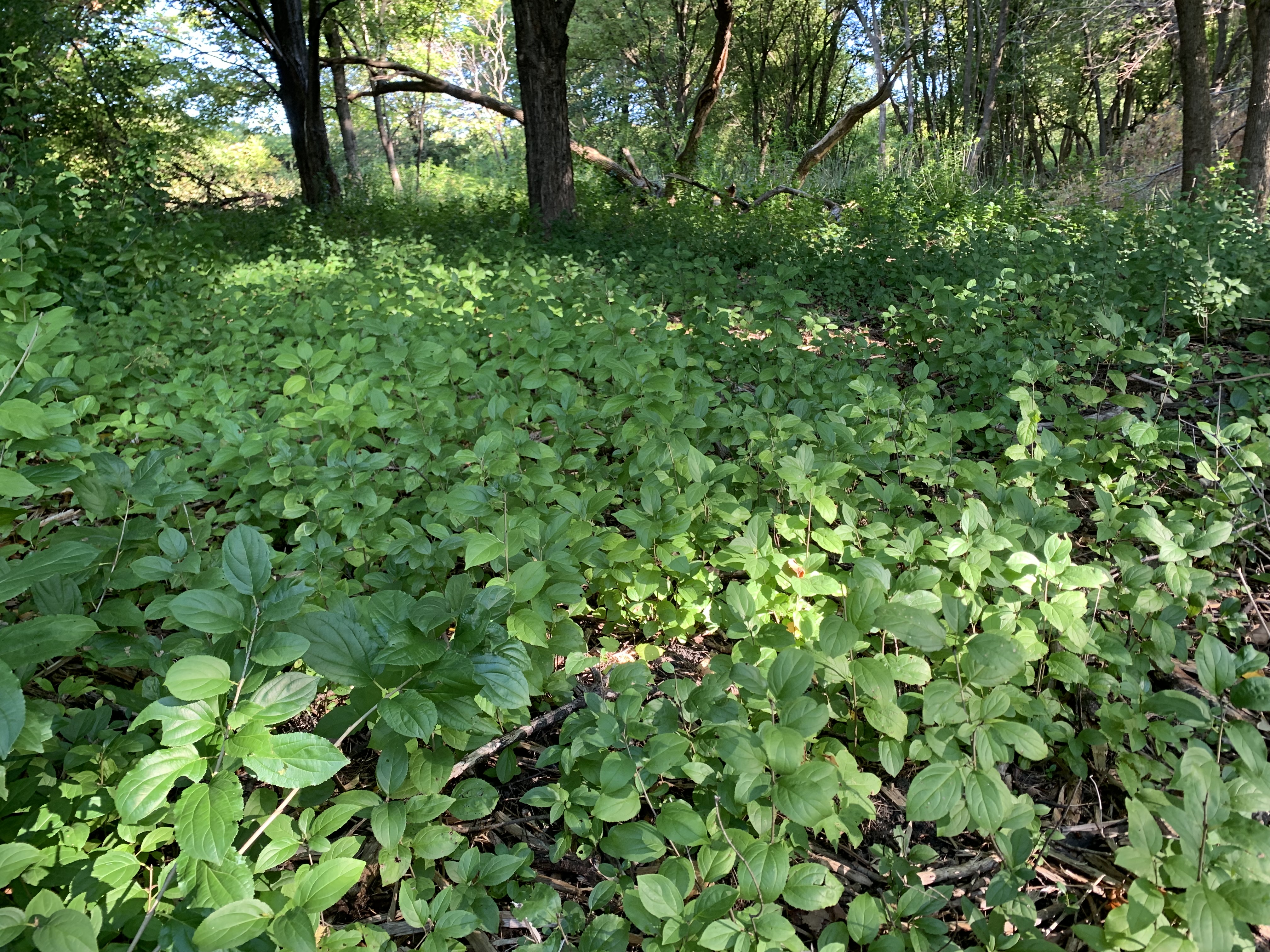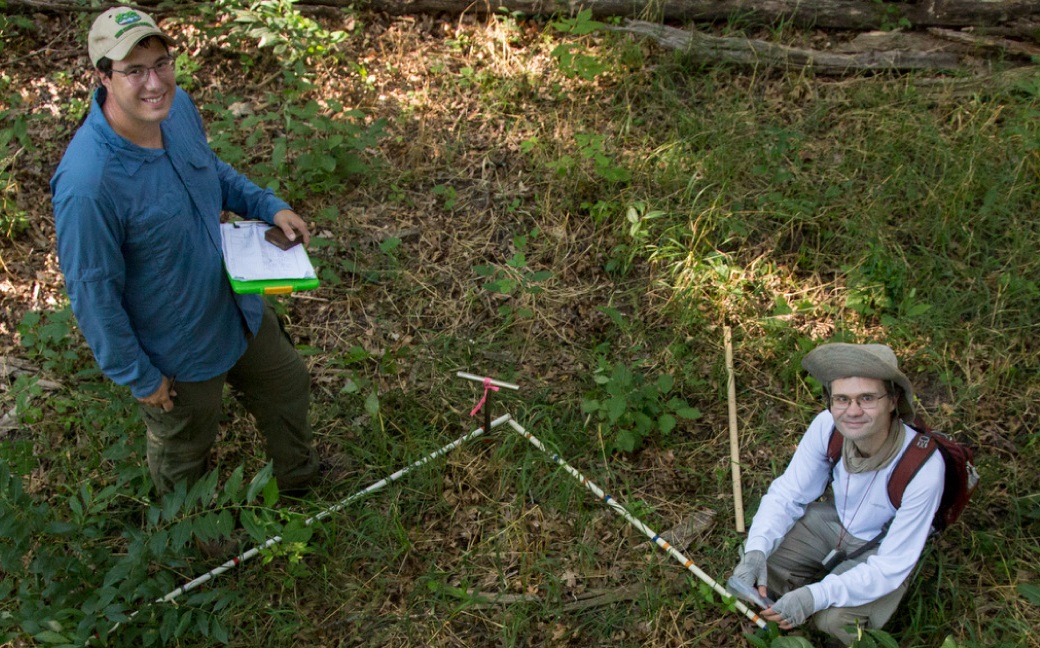Cover It Up encompasses a suite of related research projects, headed by the Reich Lab in the Department of Forest Resources.
For news on Cover It Up and other invasive species research, follow MITPPC via their newsletter and Twitter feed.
Why study buckthorn
Common buckthorn (Rhamnus cathartica) is an aggressive invader of forest and woodland understories in eastern North America. Originally introduced in the 19th century, buckthorn was coveted as a highly desirable hedge plant due to its ability to grow quickly, produce dense vegetation, stay green late into the fall, and produce abundant, attractive fruit. Unfortunately, these same traits make buckthorn a highly successful invasive species that can easily dominate natural areas. Consequences of buckthorn invasion are prolific, ranging from loss of native plants and animals to increased erosion and lowered water quality. The thickets created by buckthorn also degrade natural resources and make it harder for people to enjoy the outdoors.
A persistent problem without quick fixes
Given the far-reaching impacts of buckthorn invasion, it should be of no surprise that a great diversity of approaches have been devised to remove buckthorn. Common approaches include hand cutting or pulling, forestry mowers, chemical herbicides, and even controlled grazing by animals like goats. While all of these approaches can be effective at reducing the amount of buckthorn in a forest, they rarely have lasting effects. Buckthorn produces large amounts of seed that quickly germinate and can overwhelm other species attempting to recover following buckthorn management. Additionally, small buckthorn often escape treatment, and incompletely treated stems easily resprout. The combined growth of seedlings and sprouts can quickly fill the ecological void created by buckthorn removal, often necessitating continued, repeated management at great ecological and economic cost. In short: we know how to kill buckthorn, but we don’t know how to keep it from coming back.
Using plants to control buckthorn
The Cover It Up project includes a series of experiments designed to evaluate new ways of preventing buckthorn from returning in the years following buckthorn management. Since the project started in 2016, we have found how establishing dense cover of native plants can fill the void left by removed buckthorn, stifle returning buckthorn, and suppress other invasive plants. In some cases, this type of restoration planting can completely prevent buckthorn re-establishment. Our ongoing work continues to advance our understanding of which species to plant, how to plant them, which conditions favor their success, and how these methods can be used in conjunction with other management strategies.



